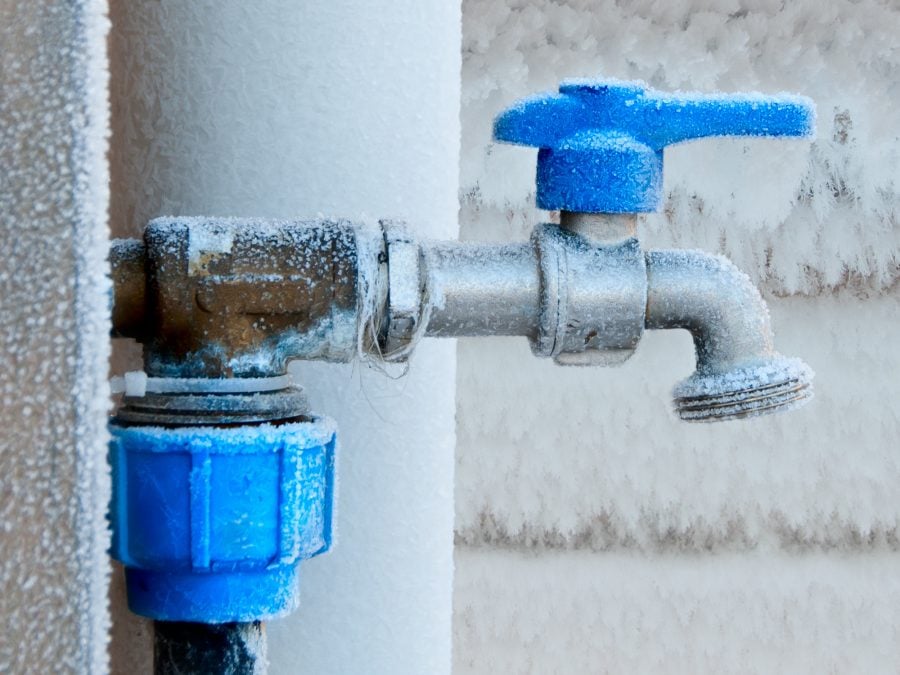What are your thoughts on How to Prevent Your Pipes From Freezing?

Winter can ruin your pipes, particularly by freezing pipelines. Right here's how to stop it from occurring and what to do if it does.
Intro
As temperature levels decrease, the threat of frozen pipes rises, possibly leading to costly repairs and water damage. Comprehending exactly how to stop icy pipelines is critical for homeowners in cool environments.
Avoidance Tips
Protecting susceptible pipes
Cover pipes in insulation sleeves or use warm tape to safeguard them from freezing temperatures. Concentrate on pipes in unheated or external areas of the home.
Home heating methods
Keep indoor spaces adequately heated up, especially areas with pipes. Open up closet doors to allow cozy air to circulate around pipes under sinks.
Just how to identify frozen pipelines
Seek decreased water flow from taps, uncommon smells or noises from pipes, and visible frost on revealed pipes.
Long-Term Solutions
Structural changes
Take into consideration rerouting pipelines far from exterior walls or unheated areas. Add additional insulation to attics, basements, and crawl spaces.
Upgrading insulation
Buy premium insulation for pipelines, attics, and wall surfaces. Proper insulation helps maintain regular temperature levels and reduces the threat of icy pipelines.
Shielding Outdoor Pipes
Garden hoses and outdoor taps
Separate and drain garden hose pipes prior to winter. Install frost-proof faucets or cover outside faucets with insulated caps.
Understanding Icy Pipes
What creates pipelines to ice up?
Pipes ice up when exposed to temperature levels listed below 32 ° F (0 ° C) for prolonged periods. As water inside the pipelines ices up, it increases, taxing the pipeline wall surfaces and potentially creating them to rupture.
Risks and problems
Frozen pipelines can result in water supply disruptions, residential or commercial property damages, and pricey repair services. Ruptured pipelines can flooding homes and create substantial structural damage.
Signs of Frozen Water Lines
Identifying icy pipes early can avoid them from bursting.
What to Do If Your Pipes Freeze
Immediate activities to take
If you presume icy pipes, maintain taps available to eliminate pressure as the ice thaws. Utilize a hairdryer or towels soaked in warm water to thaw pipes gradually.
Final thought
Preventing icy pipelines requires aggressive steps and fast responses. By comprehending the reasons, signs, and preventive measures, home owners can protect their plumbing during winter.
5 Ways to Prevent Frozen Pipes
Drain Outdoor Faucets and Disconnect Hoses
First, close the shut-off valve that controls the flow of water in the pipe to your outdoor faucet. Then, head outside to disconnect and drain your hose and open the outdoor faucet to allow the water to completely drain out of the line. Turn off the faucet when done. Finally, head back to the shut-off valve and drain the remaining water inside the pipe into a bucket or container. Additionally, if you have a home irrigation system, you should consider hiring an expert to clear the system of water each year.
Insulate Pipes
One of the best and most cost-effective methods for preventing frozen water pipes is to wrap your pipes with insulation. This is especially important for areas in your home that aren’t exposed to heat, such as an attic. We suggest using foam sleeves, which can typically be found at your local hardware store.
Keep Heat Running at 65
Your pipes are located inside your walls, and the temperature there is much colder than the rest of the house. To prevent your pipes from freezing, The Insurance Information Institute suggests that you keep your home heated to at least 65 degrees, even when traveling. You may want to invest in smart devices that can keep an eye on the temperature in your home while you’re away.
Leave Water Dripping
Moving water — even a small trickle — can prevent ice from forming inside your pipes. When freezing temps are imminent, start a drip of water from all faucets that serve exposed pipes. Leaving a few faucets running will also help relieve pressure inside the pipes and help prevent a rupture if the water inside freezes.
Open Cupboard Doors
Warm your kitchen and bathroom pipes by opening cupboards and vanities. You should also leave your interior doors ajar to help warm air circulate evenly throughout your home.

Do you really like more info about How To Avoid Freezing Pipes? Put a remark down the page. We would be glad to find out your ideas about this article. In hopes that you come back again soon. Be sure to pause to promote this blog post if you appreciated it. Thank you for being here. Don't forget to visit our blog back soon.
Recurring Service Plans